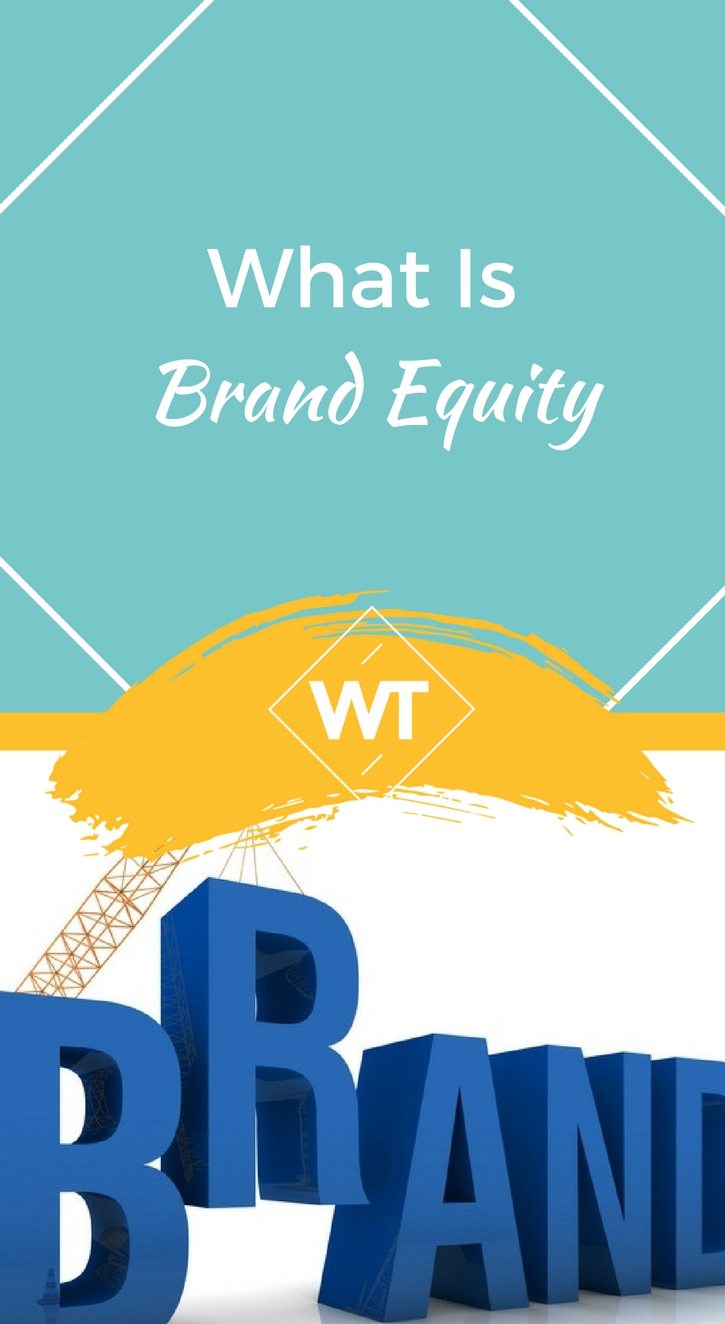What Is Brand Equity

People confuse a brand and a business all the time.
I myself spent years building a brand online but it wasn’t really making me any money until I learned how to run a business. I had a blog and a recognizable name. The blog had a certain style to it, had media mentions and had built a solid following. It was also making me some money here and there, but it was sporadic and I really had no idea how to turn it into viable income.
Like many people, I had confused a blog/website—which is an asset of a brand—with the actual business. What resulted was me spinning my wheels for some time until I figured out how to actually run a business.
Of course, all wasn’t lost. Because I’d spent so much time establishing my brand online, I was able to easily transition it into a business later on. This was so, because I had built something called brand equity (or value). This eventually made it somewhat easier for me than for people who are only just now starting to build their business from scratch, simply because I’d already made a name for myself and had built a recognizable message. Had I understood this better, though, I could have been making money all this time as well, while still continuing to grow my brand equity.
What is Brand Equity?
Brand equity is the extra kick consumers get aside from the product or service you offer them. It’s the vision, the story and the overall experience. This value becomes a major motivation for the consumer or customer to purchase something.
Apple is a killer example of this. You’re in the Apple experience even before you purchase a product from them. You go to a coffee shop and you see young professionals using Apple computers. Go to a bar or a club and musicians are using Apple products to mix music.
Apple did two things:
- First, they established themselves as a status symbol (just like Starbucks did).
- Second, they practically created an entire culture around their products and that’s why people line up for days outside of their stores waiting to get their hands on a new iPhone.
You are also in this experience while in their store. And even after you buy a product you’re partaking in the Apple experience as you unbox your purchase. I’m using a Macbook Pro I bought over four years ago and I’m still in the experience. I now have an Android and I still long for my old iPhone.
That’s the kind of space you want to occupy in your market’s brain. And that is precisely why Apple is the brand we know today—they have a tremendous amount of brand equity.
Below you’ll find some things to help you create this kind of brand equity within your own sphere of the market as well.
1. Connect your brand with empowerment
One great way to occupy your market’s brain is to link your brand with empowering them. How does your brand make them feel stronger, better, in control and empowered? How does it enhance their experience as a human? This may sound a bit philosophical but it’s very powerful. For example, Apple was all about riling up the creative revolutionaries of America. They stood up for an ideal and people followed.
In my own personal brand I empower millennials to take control of their financial lives by means of entrepreneurship. I cater to their values and ideals—which also happen to be my own values and ideals so it works out nicely.
2. Link your product or service to a tangible benefit
The most basic (and easiest) way to create brand equity is to link your product or service with a perceived tangible benefit.
Although this is basic, this is where many business owners struggle. For example, I’ve talked to several career coaches who claim to help people get more confidence. That’s great—sort of. Confidence is intangible by itself. To build brand equity in this space, you would have to define what confidence looks like, how confidence is measured and what your clients will be able to do as a result of that confidence.
For a service, for example: one very tangible and powerful benefit involves money. People can measure money and they want more of it. So maybe you say “more confidence at work will lead to more money over time because you’ll be easily promoted and able to negotiate.”
3. Build a culture
We already mentioned the example of how Apple built a culture around their brand.
Another great example of this is Starbucks. Starbucks wasn’t just another place to get coffee through a drive-thru on your way to work, it was like a bar for coffee. It completely changed the way Americans looked at coffee. It became more like a social event; and then it quickly became a status symbol (which is why people have no issue paying too much money for a latte).
Starbucks became a way for people to show off their status as a coffee connoisseur and as an intellectual. I remember going to a Starbucks near my college campus once to find one of the philosophy majors giving a lecture to high school kids about Descartes; for some reason, that scene fit perfectly with the culture Starbucks had created. Somehow, if you were in on the Starbucks culture, then you were a part of an exclusive group of people.
4. Offer an experience with your product or service
For this brand equity example we’re going to take some notes from Redbull. Redbull doesn’t just sell a drink, it sells an experience that is much higher than what a mere drink can offer.
People associate Redbull with adventure and incredible human endeavors. This is why they do that Flutag competition every year. It’s also why they sponsored Felix Baumgarner jumping from space. Anyone who watched that happen was in complete awe of how awesome humans are.
Is Redbull literally going to give you wings? No. But because of the way they chose to build their brand equity, they’ve done a good job at having people associate Redbull with the experience of having wings.
All of the aforementioned examples are a part of brand equity, and while at first glance none of these things have anything to do with the product or service, that’s not the point. Brand equity helps you occupy space in your market’s brain through emotional, psychological and cultural cues . . . and that of course leads to fans and sales.









Leave a Reply